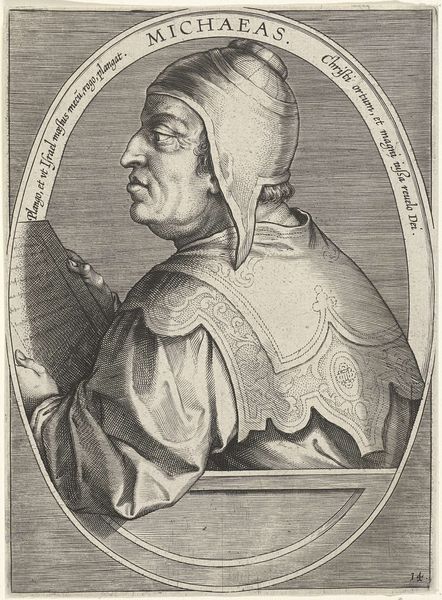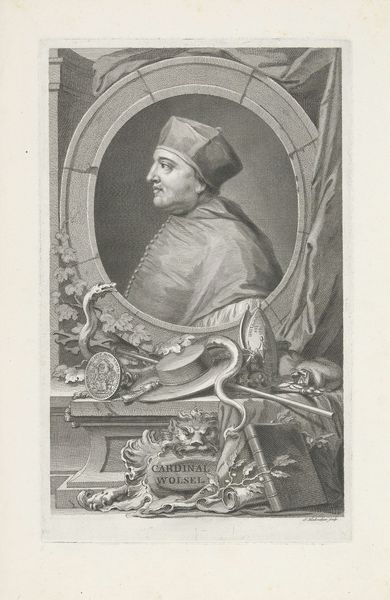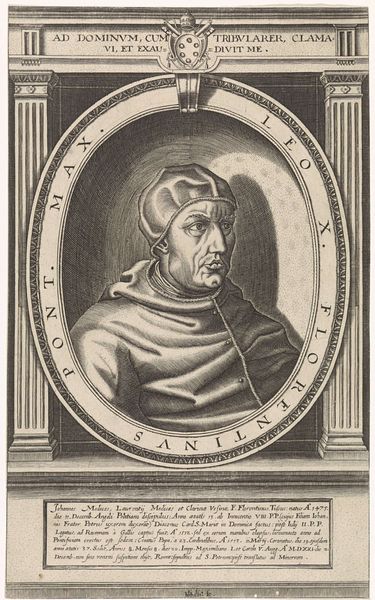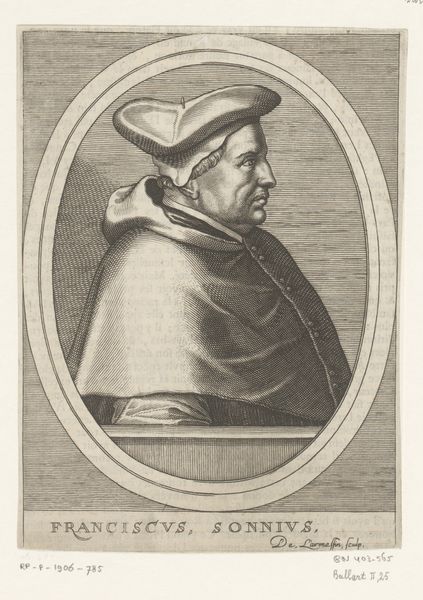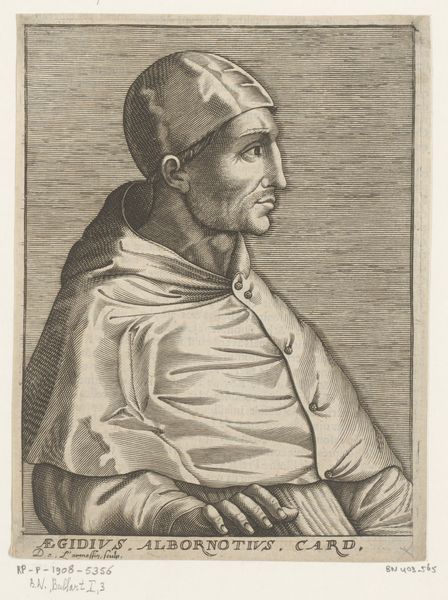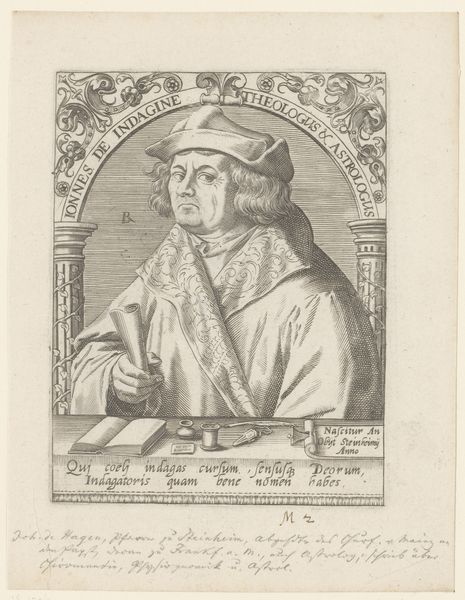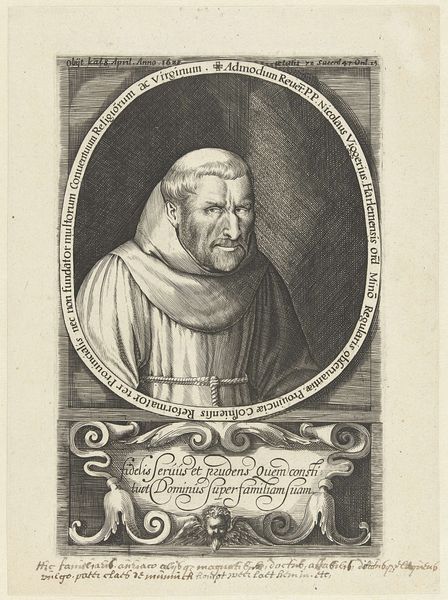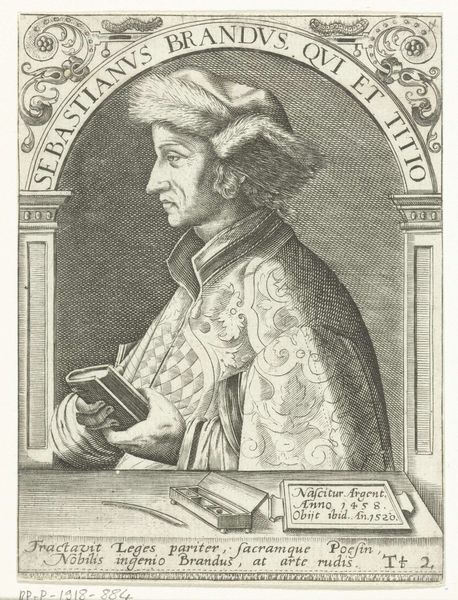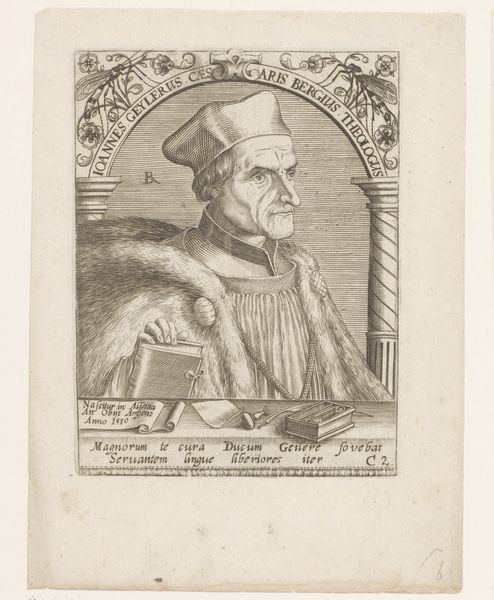
engraving
#
baroque
#
old engraving style
#
figuration
#
personal sketchbook
#
line
#
portrait drawing
#
history-painting
#
engraving
Dimensions: height 207 mm, width 146 mm
Copyright: Rijks Museum: Open Domain
Curator: This engraving, simply titled "Buste van paus Gregorius XII," offers us a glimpse into papal portraiture of the late 17th to early 18th century. It's attributed to Bernard Picart and resides here at the Rijksmuseum. Editor: My initial impression is one of melancholy grandeur. The bust of the pope seems burdened, not just by his attire, but by something deeper reflected in his downcast gaze. There’s a certain stoicism, but also a profound weariness etched into his face. Curator: The artistic style certainly evokes the Baroque era, a period characterized by drama and complexity, as you notice. However, this piece leans toward a more restrained expression than we often see in overtly theatrical Baroque art. Its place in history should inform us, too; portraits of popes, especially rendered through engraving, were powerful tools of image management. How were they seeing themselves or wanted to be seen by others? Editor: Exactly! I find myself drawn to what the artist included to situate the papacy. Note the keys lying near the pedestal on which his bust stands. These aren’t just decorative flourishes. They’re symbols loaded with meaning. This relates, obviously, to Saint Peter, who is thought to be the gate keeper of Heaven, giving the Church so much power to say who is going to Heaven or not. How do you see the objects that have been placed behind? Curator: Good spotting! Behind, there's also a landscape scene reminiscent of Italy. You can tell from the style the intentions to portray him as strong and also culturally enlightened. But for me, the figures framed in a laurel are most evocative! The small group illustrates his conflicts in life and office! These pieces enhance the image of the pope but can diminish who he was, or amplify aspects, according to viewers. Editor: That's an astute observation! These additional elements offer narrative context. We begin to piece together an intersectional perspective and read this artwork as more than a visual depiction. We have the key, but must search through this background landscape and behind for context, even conflict to piece who is it about and how the Church worked at the time! Curator: Yes. Reflecting on "Buste van paus Gregorius XII," it's a powerful piece of propaganda and image production; it invites contemplation not only on the historical figure, but also on the visual strategies used to construct authority and communicate power through art. Editor: Agreed. Considering this artwork, especially within a museum setting, we're compelled to not just observe, but actively question and contextualize these historical portrayals. To reveal, even to revisit them through a critical lens is very important for modern society.
Comments
No comments
Be the first to comment and join the conversation on the ultimate creative platform.
